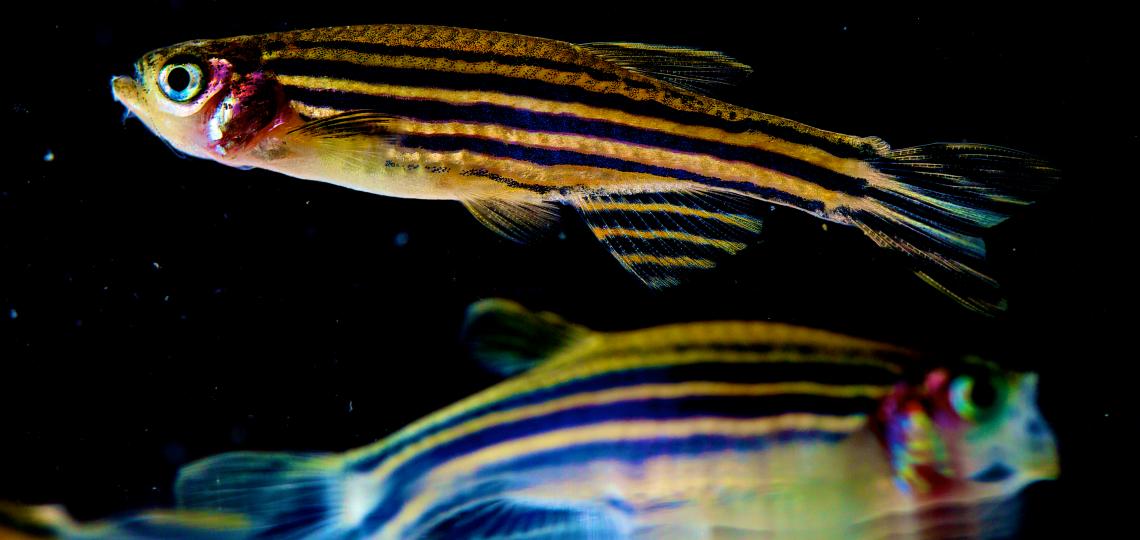Overview
The Zebrafish Genetic and Phenotyping Core provides expertise and equipment to support your experiments with zebrafish as an in vivo model. The Core can generate zebrafish with mutations in specific genes and engineer transgenic fish to monitor expression of genes of interest, mark cell type populations, proliferation and differentiation in live embryos. The Core can also assist with phenotypic analysis by preparing zebrafish for live imaging, histology, next generation sequencing, mass spectrometry or other biochemical assays. Design and performance of chemical screens to identify small molecules that cause or rescue a phenotype of interest in zebrafish embryos is also a core service.
Why Zebrafish?
1. Genetic similarity to humans
Zebrafish share a high degree of sequence and functional homology with mammals, including humans. Due to the conservation of cell biological and developmental processes across all vertebrates, studies in fish can give great insight into human disease processes.
2. Easier to house and care for than rodents
Due to their small size and the relatively simple nature of their natural environment, it is easier to keep zebrafish in what appear to be more natural conditions than possible for mammals, reducing stress and variation in experiments.
3. Impact of any genetic mutation or drug treatment is easy to see
The transparent nature of zebrafish embryos and larvae allows for non-invasive observation of genetic mutations or drug effects, improving accuracy and minimizing animal suffering.
4. Zebrafish produce many offspring quickly, ensuring a steady supply for research.
5. Easier to introduce genetic changes
Introducing genetic changes in zebrafish is straightforward using chemical mutagens and other tools such as CRISPR. Zebrafish are able to withstand much higher levels of chemical mutagens than can be tolerated by rodents, so it is possible to induce a much higher density of mutations in their genome.
Workflow
Download and view workflow and opportunities for zebrafish as an in vivo model.









